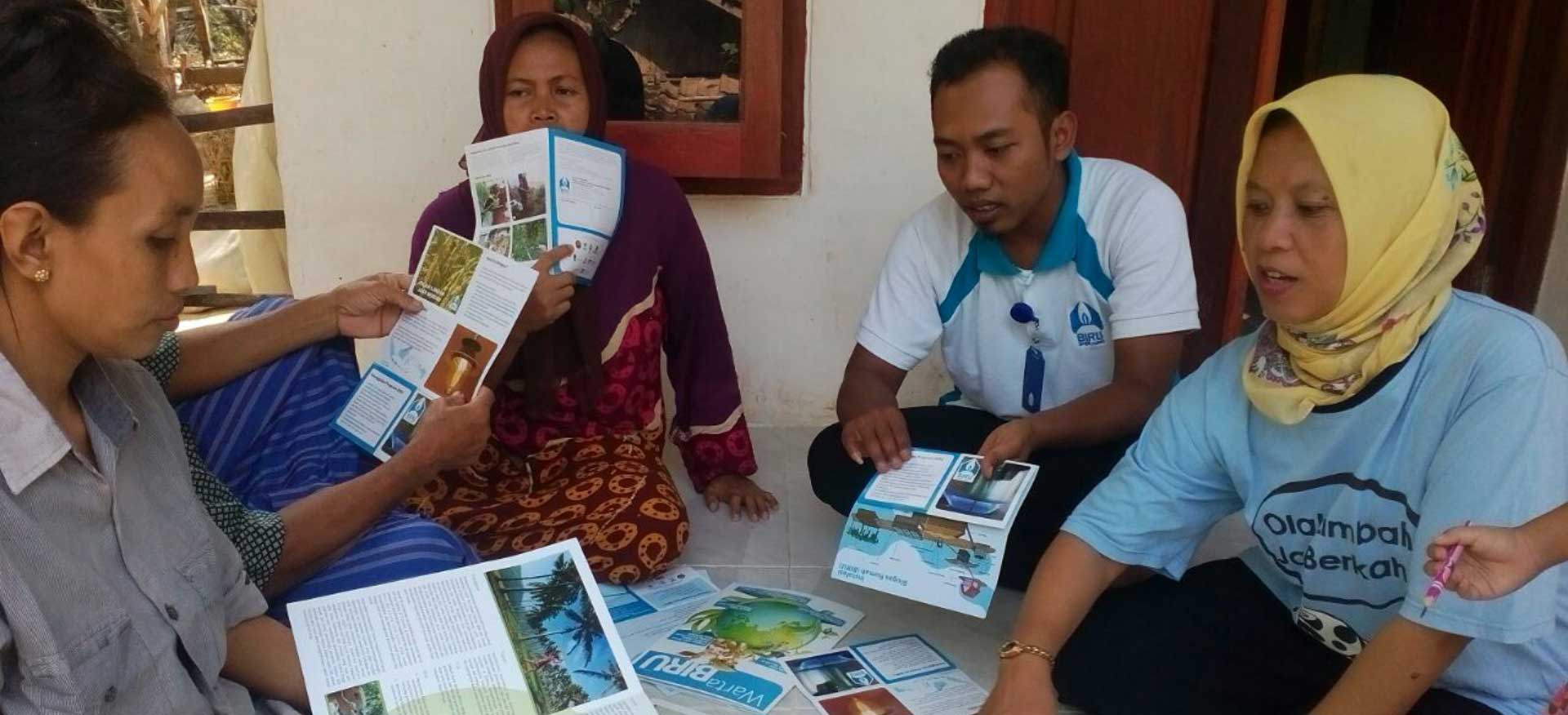Harvesting Smiles in a Cauliflower Garden
From a distance, thick fog still envelops the pine trees in the valley of Juanda Great Forest Park. Activities begin to mark the morning in Kampong Areng, a hamlet in Cibodas Village, Lembang Subdistrict, West Java. Farmers show up at their vegetable plantations or start to attend to their cattles. It is the tenth day of January, and the faces of the people are looking more lively.
Eti was no exception. That morning, she smiled when asked about her husband’s whereabouts. “Hendra went to the garden early this morning,” she said. “We’re harvesting the cauliflowers today.”
“This is the second time I’m harvesting this lot,” Hendra said in his garden. “These cauliflowers are looking good, white and smooth and they vary in size.”
His cauliflowers, which locals refer to as burkol, weigh about half to one kilogram each. From the two parts of harvesting, Hendra managed to amass one hundred cauliflowers weighing two quintals in total.
At collector’s level, the burkol can be sold for Rp5 thousand each. One collector had come to Hendra to ask him if he would sell all of his cauliflowers for Rp3.5 million. But Hendra had no intention of selling them in bulk. There were about 2,700 cauliflowers in his garden. According to him, the garden could produce up to 1,200 kilograms of burkol this harvesting season. With today’s selling price, that amount would give him a gross income of approximately Rp6 million a pretty big number for farmers like Hendra.
Several agricultural crops are something the farmers of Kampong Areng look forward to harvesting. Selling fresh milk to a cooperative union is not that profitable; the maintenance costs of the cattle have always been bigger. Therefore the preparation stage of the planting beds is very important so that the growth of the plants and the harvest will not let them down.
Hendra always prepares his plot with great care. After plowing the soil and mixing it with basic fertilizers, he builds the beds which will then be covered with sheets of mulch. The length of each bed is seven meters, the width one meter and the height 40 centimeters. For his 1,000 square meter plot of land, these preliminary steps take about two weeks with five working hands. After the plot is ready, the next step is seeding the cauliflower seeds and waiting for them to grow in two weeks before the seedlings are moved to the beds. Planting the seedlings in the beds take about one week, and the plants should be 50 centimeters away from each other.
The total production costs of Hendra’s current cauliflower garden was Rp3.8 million. Taken away from the estimated gross income for a sale period of 2.5 months, namely Rp6 million, the net income Hendra will receive is about Rp2.2 million.
When specified, Hendra’s cauliflower farm’s total production costs comprise wages for five assistants, the purchase of seeds, chemicals, manure, and sheets of mulch. According to Hendra, these production costs used to be larger, namely before he began to use bio-slurry produced by his BIRU home biogas reactor as a mixture for the fertilizer.
Hendra’s cauliflower garden does not strictly use organic fertilizer. He still includes chemicals, including chemical fertilizers, such as KNO, antrakol, treser, and skor pesticide. But for the rest, Hendra has been using compost from cow manure mixed with bio-slurry vermin-compost, which is a mixture of organic fertilizer and bio-slurry that has gone through the process of decomposition and drying by earthworms. During the plants’ growth, Hendra provided a pesticide solution mixed with liquid bio-slurry every week for one and a half months. Hendra feels grateful to have gained extra benefits from his BIRU reactor.
Previously, Hendra always included chicken droppings in his garden’s preparation stage. The organic fertilizer that uses bio-slurry and earthworms that he now applies to his garden has turned out to be just as good. Hendra is now ready to use the same formula in the planting stage of other vegetables, in gardens that are hoped to bring more smiles to him and his family. (Deni Suharyono)

